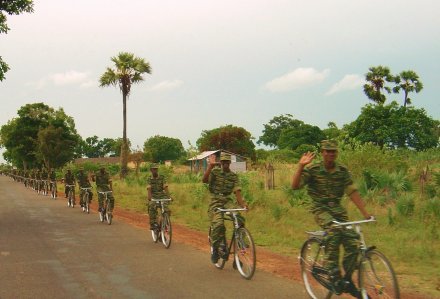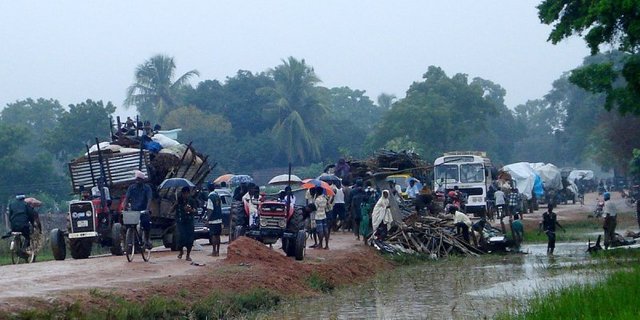The longest civil war in Asia: Sri Lanka's bloody history
Sri Lanka is a small country surrounded by the Indian Ocean. The island country, known to the world as the Tears of the Indian Ocean, is a land of natural beauty. Freed from British colonial rule in 1947, the country changed its name from Ceylon to Sri Lanka. Lots of foreign tourists visit the country every year to enjoy its beauty. In addition to its natural beauty, the people of this South Asian country carry memories of a long bloody civil war.
To find out the cause of Sri Lanka's civil war, one has to look back. The British ruled Ceylon and Sri Lanka from 1815 to 1947. From the very beginning, the Sinhalese people were socially dominant in British ruled Sri Lanka. It is generally believed that Sinhalese speakers came to Sri Lanka from India around 500 BC and have been in the majority in the country ever since. On the other hand, the Tamil-speaking people are known to have come to the country much later, in the seventh to eleventh centuries AD.

Source
As of 1815, the total population of Ceylon at that time was three million Buddhist Sinhalese and only three million Hindus Tamil. But after the arrival of the British, when a wide variety of farming was introduced in Sri Lanka, the British officials brought about one million Tamil-speaking people from India to be engaged in farming.Gradually, Tamil-majority settlements developed in the northern part of the country. The school was established for the Tamil speaking people with the help of the English. And an educated class was formed among the Tamils. British officials have been deliberately over-recruiting Tamils in various bureaucratic positions. This caused dissatisfaction among the majority Sinhalese people. The old game of dividing the British rulers began.
In 1947, the British government declared the independence of Ceylon and Sri Lanka. Immediately after independence, the Sri Lankan government began to pass discriminatory laws curtailing the rights of the Tamil minority. The situation of Indian Tamils, especially those brought by the British, became worse.
In 1956, the government declared Sinhala as the only official language of the country, making it difficult for Tamils to get government jobs.In the meantime, the Ceylon Citizenship Act of 1948 de-stateized about seven lakh Indian Tamils. Most of them came from India for farming on the island during the British rule. The sudden loss of citizenship sparked outrage against the country's government and the majority of the population. And so the seeds of a long civil war began to germinate in the minds of the Tamil people.
In 1956 a massive riot broke out there. So that the Sinhalese and Tamil-speaking peoples resort to violence against each other. As a result, thousands of Tamil-speaking people were forced to migrate to the Tamil-majority north of the country.
Velupillai Prabhakaran appeared on the stage in 1982. Who later became the sole leader of the Sri Lankan Tamils. And he became the only commander for the Tamils in the long civil war.
Prabhakaran organized the students of the university in 1962 and formed a student movement called 'New Tamil Movement'. The movement was started to demand equal rights for Tamil students in the grading system and to give more Tamil students access to higher education. In 1985, the mayor of Jaffna was assassinated at their hands, further fueling the ongoing violence.
